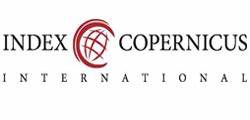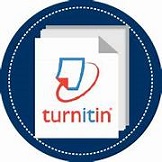Analysis of Islamic Tourism Potential Development in Kerinci
DOI:
https://doi.org/10.61104/jq.v1i2.132Keywords:
Islamic Development, SWOT AnalysisAbstract
This research analyzes the 3A concept and concludes the SWOT concept in developing Islamic Tourism Potential in Kerinci. The research method used is a qualitative-descriptive approach, using field observation, interviews and literature study methods. The analysis was carried out using the Miles and Herberman interactive analysis model and SWOT analysis. Research found that Islamic Tourism in Kerinci has become a tourist icon for this region, with a number of other supporting tourist attractions that have great potential. However, there are still several obstacles that hinder the development of this tourist area. Therefore, alternative tourism development strategies can help encourage the development of this area to become more advanced and meet the required needs
Downloads
References
Abdul-Razaq, S. (2016). Halal, New Zealand! An Exploratory Study into the halal-
friendliness of Accommodation Providers in New Zealand. February, 449–455. file:///C:/Users/Windows 8.1 Pro/Downloads/Razzaq, Serrin MCom thesis.pdf.
Barreto, Mario dan Ketut Giantari, 2015. Strategi Pengembangan Objek Wisata Air Panas Di Desa Marobo, Kabupaten Bobonaro Timor Leste. E-Jurnal Ekonomi dan Bisnis Universitas Udayana Bali, Vol.4:11.2015.
Brown, and Stange. 2015. Tourism Destination Management. Washington University
Buhalis, Dimitros. 2000. Marketing The Competitive Destination of The Future. Tourism.
Journal of Management. Volume 21, Issue 1,
Deputii Bidang Pengembangan Kepariwisataan, Laporan Akhir Kajian PengembanganWisata Syariah, (Jakarta: Asisten Deputi Penelitian Dan Pengembangan Kebijakan Kepariwisataan, Deputi Bidang Pengembangan Kepariwisataan Kementerian Pariwisata Republik Indonesia, 2015). hal. 2
Felyana, Wazni. (2015). Dampak Pengembangan Objek Wisata Halal Terhadap Kehidupan Sosial dan Pendapatan Pedagang di Kapal PLTD Apung Kota Banda Aceh. Aceh Ar-raniry
Hengky Hermanto, Creative Based Tourism Dari Wisata Rekreatif Menuju Wisata
Kreatif, (Yogyakarta, Galangpress, 2011), hlm., 17
Jhon W. Creswell, Educational Research, Planning, Conducting, and Evaluating
Quantitative and Qualitative Research (Boston: University of Nebraska- Lincoln, 2018), 16
Lubiss, M.Z.M. 2018. Prospek Destinasi Wisata Halal Berbasis OVOP (Oone Village One Product). Tahun 2018. Jurnal Kajian Ekonomi Islam. Padang: Universitas Islam ImamBonjol Padang. Vol 3. No 1
Ma’ruf Amin; https://www.infopublik.id/kategori/nasional-ekonomi-bisnis/708466/wapres-ungkap-perbedaan-wisata-religi-dan-wisata-halal.di akses 6 November 2023
Milles, Matthew B. and Huberman, A. Michael, Qualitative Data Analysis (California: SAGE Publication Inc, 2016), 31.
Munasef. 1995. Manajemen Usaha Pariwisata di Indonesia. Jakarta: PT.Toko
Gunung Agung.
UNWTO. 2011. Hand book on Tourism Product Development, Madrid: World Tourism
Organization (UNWTO) and European Tourism Commision (ETC)
Yoeti, Oka A. (1985). Pengantar Ilmu Pariwisata, Bandung: Angkasa
ZAHARA, Siti. 2016.Menguak Tabir Sejarah Kebudayaan Islam Di Kerinci Lewat
Rekonstruksi Benda Cagar Budaya Dan Bersejarah
Downloads
Published
How to Cite
Issue
Section
License
Copyright (c) 2023 QOSIM : Jurnal Pendidikan, Sosial & Humaniora

This work is licensed under a Creative Commons Attribution-ShareAlike 4.0 International License.










 This work is licensed under a
This work is licensed under a 